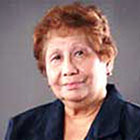WE return to our discussion on Peter Senge’s five disciplines which are the processes involved in an organization’s efforts to realize the change that the organization desires. Earlier, we discussed second order change – a change not just of procedures, but of philosophy, mission and goals—hence, a change that is systemic and therefore irreversible. This is referred to as second order change as distinguished from a change that is merely cosmetic – termed as first order change. However, we qualified that modern research, rather than distinguishing first from second order change as a “kind” of change, first order change is considered as an evolutionary stage of second order change.
To synthesize the process of embedding a second order change, an organization has to be a learning organization—“where people continually expand their capacity to create the results they truly desire, where new and expansive patterns of thinking are nurtured, where collective aspiration is set free, and where people are continually learning how to learn together.” Thus Peter Senge’s five disciplines “provide a process and a language to help people develop their capacity to hold and seek a vision, to reflect and inquire, to build collective capabilities and to understand systems.” This far, we have discussed personal mastery and mental models as two of the five disciplines recommended as the process and language to realize the change they truly aspire to materialize. The other three disciplines are team learning, shared vision and systems thinking.
Continue reading with one of these options:
Ad-free access
P 80 per month
(billed annually at P 960)
- Unlimited ad-free access to website articles
- Limited offer: Subscribe today and get digital edition access for free (accessible with up to 3 devices)


